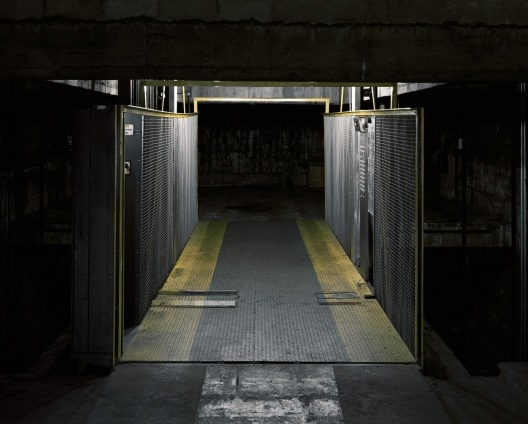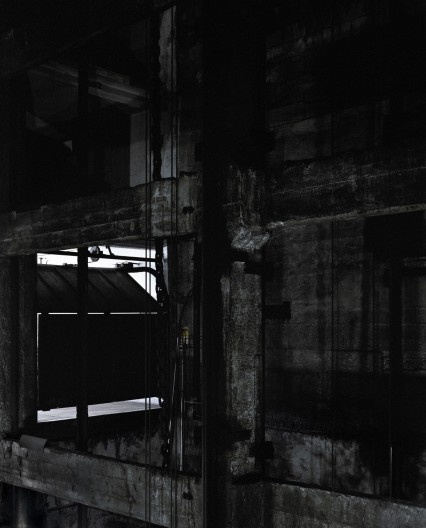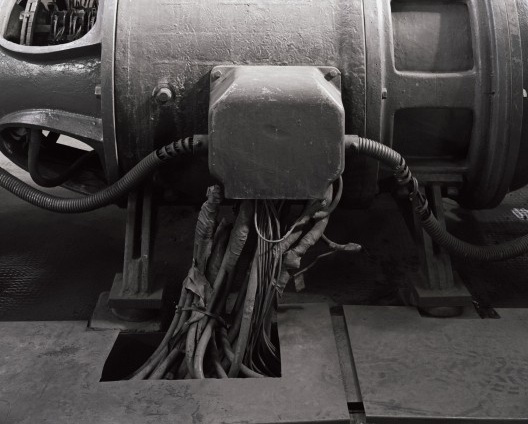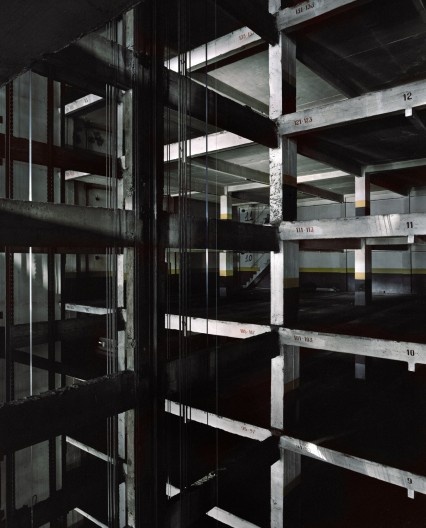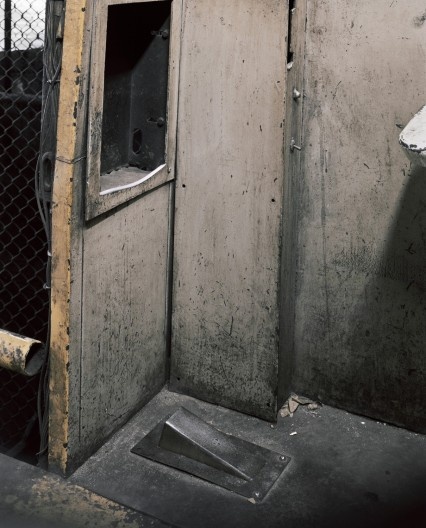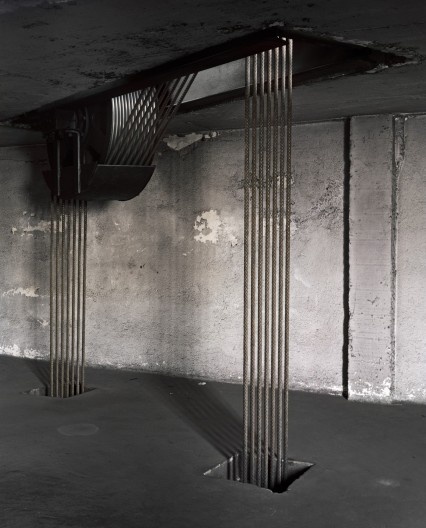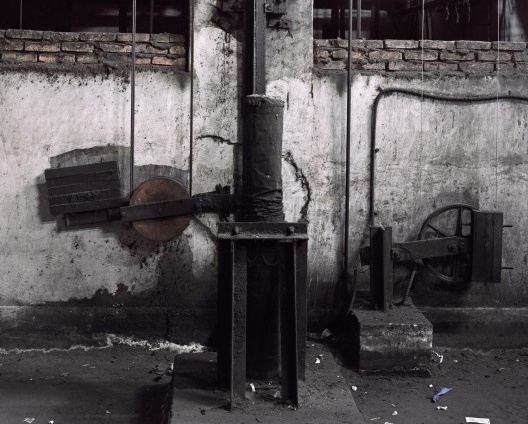The lens of the photographic camera both separates and unites two worlds: that of the observer and that of the object observed. In face of the nearly infinite multiplicity of animate and inanimate things, which in combination form the possible landscapes, the aesthetic gaze frames something that already exists, but which begins to exist in another way. Something like an inert rubber balloon that takes on an entirely new graceful aspect when inflated with air. Understanding the photographic image is a search for the breath of air that unites the two worlds.
A first look at the shots presented at the exhibition Garagem Automática [Automatic Garage] will see side walls of buildings with pockmarked surfaces revealing parts of their internal structures of concrete columns and beams, interspersed with bricks and cement blocks. Incomplete or dilapidated buildings without formal and technical virtues. And the dense and cold shadow of the empty spaces within them suggests a slaughter that swept away all the human life.
Our uneasiness compels us to take another look, now attentive to the details and traces, examining signs that reveal hidden meanings. The series allows us the comfort of gaining this knowledge while remaining outside the gelid world unveiled by the isolated photo. Artificial lights illuminate planes that emerge from the darkness; steel cables, chains, rollers and pulleys in a good state of repair suggest the monotonous movement of an elevator, the slow passing of an automobile, the stressful coming and going of the driver; a panel with red lights manifests an operation underway.
Felipe Russo, an atypical photographer, is a biologist who worked as a researcher during the 2000s. As a research assistant at the Biology Institute of USP, he produced photographic documents besides separating and cataloging material collected on field trips. In these activities he acquired habits that became rooted in his sensibility: patiently observing phenomena which are invisible to unprepared eyes, classifying a species based on resemblances between different specimens, understanding an ecosystem as a universe where biotic and abiotic environments interact.
In his aesthetic construction we see the indelible marks of the scientific training the photographer underwent in his youth. Instead of the virtuosity of the use of the resources of his art – framing, lighting, etc. – we see a calm search for the extraordinary and for the strange in the reiteration of the nearly identical. Thanks to the collection of “specimens” that inhabit that enormous camera obscura, an anonymous, prototypical garage is obtained.
The automated robot that manipulates automobiles – “the machine that stores machines,” in the definition of the author – is recorded by a large-format camera, with 10 x 12 cm colored long-exposure negatives. The excellent definition resulting from this procedure allows for very large-format enlargements, where one sees the imprint of muffler smoke on the wall, the mark of tires on the floor, the grime and dust coating the objects.
Felipe Russo’s Garagem Automática is a record of an extended, subjective time which leaves its traces in the artifacts of man.
about the author
Abilio Guerra is a professor at the undergraduate and postgraduate level at FAU Mackenzie, and is an editor at Romano Guerra Editora, serving as coeditor, together with Silvana Romano Santos, of the portal Vitruvius.



